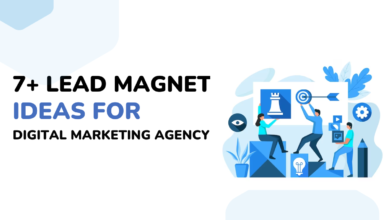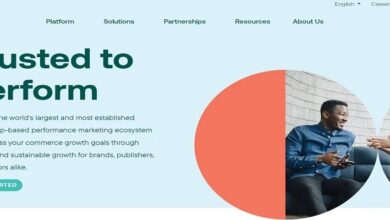Strengthen Client Online Presence
In today’s digital-first world, establishing a robust online presence is critical for any business aiming to thrive. The internet has transformed how we interact, shop, and access information, making it essential for companies to adapt and maintain visibility in this dynamic environment. For agencies and marketers, helping clients build a stronger online presence involves implementing strategic approaches like using white label link building services for their clients’ websites, and engaging in social media. These methods not only strengthen your clients’ online presence but also position your agency as a vital partner in their digital success.
Understanding Your Client’s Needs
The first step in building a strong online presence is understanding your client’s specific needs and goals. This involves:
- Conducting a thorough needs assessment: What are your client’s business objectives? Are they looking to increase brand awareness, drive sales, or engage with their audience?
- Identifying target audiences: Who are your client’s customers? Understanding demographics, interests, and online behavior is crucial.
- Evaluating current online presence: Assess your client’s existing website, social media profiles, and online reviews. Identify strengths, weaknesses, and areas for improvement.
Developing a Comprehensive Strategy
Once you have a clear understanding of your client’s needs, it’s time to develop a comprehensive online strategy. This should include:
- Website Optimization: Ensure the client’s website is user-friendly, mobile-responsive, and optimized for search engines (SEO). This involves improving site speed, using relevant keywords, and creating high-quality content.
- Content Creation: Develop a content plan that includes blog posts, videos, infographics, and other formats that resonate with the target audience. Regularly updated, valuable content helps attract and retain visitors.
- Social Media Marketing: Choose the right platforms where the client’s audience is most active. Develop a posting schedule, create engaging content, and interact with followers to build a loyal community.
- Email Marketing: Build and segment email lists to send personalized, relevant content to subscribers. Email marketing is an effective way to nurture leads and convert them into customers.
Search Engine Optimization (SEO)
SEO is a critical component of building an online presence. It involves optimizing your client’s website and content to rank higher in search engine results. Key SEO practices include:
- Keyword Research: Identify the terms and phrases potential customers use to search for products or services. Use these keywords strategically in website content, meta descriptions, and headers.
- On-Page SEO: Ensure each page of the website is optimized with relevant keywords, high-quality content, and internal links.
- Off-Page SEO: Build backlinks from reputable websites to increase domain authority. Guest blogging, influencer partnerships, and social media sharing can help achieve this.
- Technical SEO: Improve website speed, and mobile-friendliness, and ensure the site is secure (HTTPS).
Leveraging Social Media
Social media platforms are powerful tools for building an online presence. Here’s how to make the most of them:
- Platform Selection: Focus on platforms that align with the client’s brand and target audience. Facebook, Instagram, LinkedIn, Twitter, and TikTok each offer unique advantages.
- Content Strategy: Share a mix of promotional, educational, and entertaining content. Use visuals, stories, and live videos to engage followers.
- Community Engagement: Respond to comments, messages, and reviews promptly. Encourage user-generated content and build a community around the brand.
- Advertising: Invest in social media ads to reach a larger audience. Use targeting options to ensure ads are seen by the right people.
Harnessing the Power of Content Marketing
Content marketing is about creating and sharing valuable content to attract and engage a target audience. Here’s how to execute it effectively:
- Blogging: Regular blog posts on relevant topics can drive traffic to the website and establish the client as an authority in their industry.
- Video Content: Videos are highly engaging and can be used on websites, social media, and email campaigns. Tutorials, product demos, and behind-the-scenes videos are particularly effective.
- Infographics: Visual content like infographics can simplify complex information and make it more shareable.
- E-books and Whitepapers: Offer in-depth content on specific topics in exchange for contact information, helping to generate leads.
Effective Use of Email Marketing
Email marketing remains a potent tool for engaging with customers and driving conversions. Best practices include:
- Personalization: Use the recipient’s name and tailor content to their interests and behaviors.
- Segmentation: Divide the email list into segments based on demographics, purchase history, or engagement level to send more targeted emails.
- Automation: Set up automated email sequences for welcome emails, abandoned cart reminders, and post-purchase follow-ups.
- Analytics: Monitor email performance metrics like open rates, click-through rates, and conversion rates to refine strategies.
Measuring and Analyzing Performance
To ensure the strategies are effective, it’s crucial to measure and analyze performance regularly. Use tools like Google Analytics, social media insights, and email marketing reports to track:
- Website Traffic: Monitor overall traffic, traffic sources, and user behavior on the site.
- Engagement Metrics: Track likes, shares, comments, and other engagement metrics on social media.
- Conversion Rates: Measure the percentage of visitors who take desired actions, such as making a purchase or filling out a contact form.
- ROI: Calculate the return on investment for various marketing activities to determine what’s working and what needs adjustment.
Continuous Improvement
Building a strong online presence is an ongoing process. Regularly review and adjust strategies based on performance data and changes in the digital landscape. Stay updated with the latest trends and technologies to keep your client’s online presence fresh and effective.
Conclusion:
Building a stronger online presence for your clients involves a multifaceted approach that includes website optimization, social media engagement, local SEO, effective link building, and Promotion via social media. By implementing these strategies, you can help your clients achieve greater visibility, credibility, and success in the digital landscape. Remember, the key to success lies in continuous learning, adaptation, and staying updated with the latest digital marketing trends and best practices.





